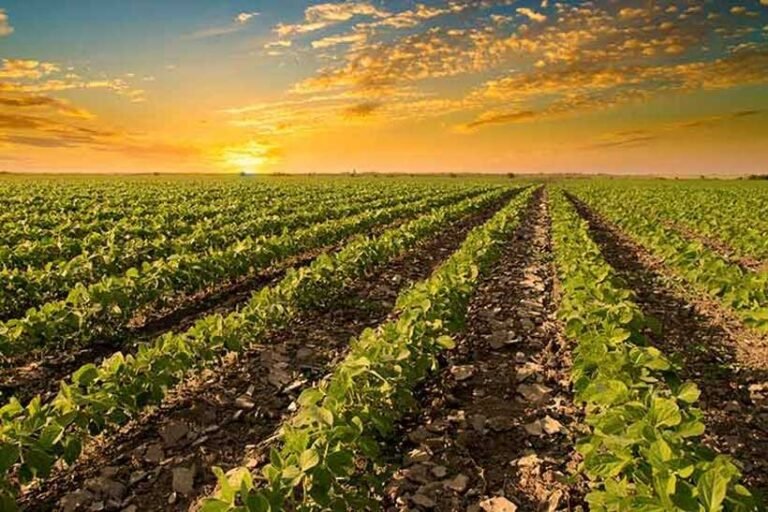The phrase “good day farm imperial” conjures up an image of vast, lush landscapes managed with an emphasis on both productivity and sustainability. In this extensive exploration, we delve into the principles of sustainable agriculture practices, their benefits, and how they are being implemented on modern farms that aspire to this imperial standard of excellence. By integrating traditional methods with innovative technologies, these farms are setting new benchmarks in the agriculture industry.
Understanding Sustainable Agriculture
Sustainable agriculture is the act of farming using principles of ecology, the study of relationships between organisms and their environment. The goal is to develop farming systems that are productive and profitable without compromising the future generations’ ability to meet their own needs.
Key Components
- Resource Efficiency: Utilizing inputs in a manner that maximizes their efficiency, such as water and energy-saving techniques.
- Soil Management: Preserving soil health through crop rotations, cover crops, and the use of organic fertilizers.
- Pest Management: Implementing integrated pest management strategies that reduce the need for chemical pesticides.
- Biodiversity: Supporting a variety of organisms and wildlife to maintain ecosystem balance.
These components are crucial for the resilience of agricultural systems, ensuring they can sustain productivity and environmental health over time.
The Impact of Climate Change on Agriculture
Climate change poses significant challenges to agricultural productivity due to the increased frequency of extreme weather events, changing rainfall patterns, and shifting temperatures. Adaptation and mitigation strategies are vital in managing these impacts.
Adaptation Strategies
- Improved Crop Varieties: Developing and using crops that are more resistant to drought, heat, and pests.
- Water Management Techniques: Utilizing advanced irrigation systems that conserve water and enhance water use efficiency.
- Agroforestry Practices: Integrating trees into farm landscapes to provide shade, improve soil health, and increase biodiversity.
These strategies help farms remain productive and resilient in the face of climate variability, ensuring a stable food supply.
Technology and Innovation in Modern Farming
Innovation is at the heart of transforming the traditional farm into a “good day farm imperial.” From precision agriculture to biotechnology, modern farms are embracing new technologies to enhance their sustainability.
Precision Agriculture
This approach uses information technology and tools like GPS, drones, and sensors to monitor field conditions and manage agricultural practices precisely. This ensures optimal plant growth and resource use, reducing waste and increasing yields.
Biotechnology
Genetic modifications and molecular diagnostics are employed to improve crop resistance to diseases and pests, enhancing food security without extra chemical inputs.
These technologies not only contribute to sustainable farming practices but also help in managing large scale farms efficiently, marking a step towards the imperial standards of a good day farm.
Economic Aspects of Sustainable Farming
While the initial cost of adopting sustainable practices can be high, the long-term benefits include reduced input costs, improved crop yields, and access to new markets. Sustainable farms can benefit economically by aligning with consumer preferences towards eco-friendly products.
Market Trends
Consumers are increasingly aware of the environmental impacts of their purchases, leading to higher demand for products from sustainable sources. This shift is encouraging more farms to adopt sustainable practices.
Government Policies and Incentives
Various government programs and incentives are available to support farmers transitioning to sustainable practices. These can include grants, tax breaks, and technical assistance, making it economically viable for farms to improve their sustainability profiles.
Social Implications and Community Engagement
“Sustainable” extends beyond environmental and economic factors; it also encompasses social implications. Farms operating under the good day farm imperial model often engage more with their local communities, fostering a sense of connection and mutual benefit.
Educational Outreach
Many such farms offer tours, workshops, and other educational programs to teach community members about sustainable agriculture. This not only raises awareness but also fosters community spirit and cooperation.
Local Food Systems
By focusing on local markets, sustainable farms help reduce food miles, promote food security, and boost local economies. Community-supported agriculture (CSA) programs are an excellent example of this symbiotic relationship.
Conclusion
The concept of a good day farm imperial represents the zenith of sustainable farming, combining productivity, environmental stewardship, and social responsibility. By adhering to sustainable practices, these farms not only contribute positively to the environment but also offer viable economic and social benefits. As the world continues to grapple with environmental challenges, the principles of sustainable agriculture embodied by the good day farm imperial serve as a guiding light for future farming practices, ensuring that we can feed our global population without exhausting the resources future generations will depend upon.

